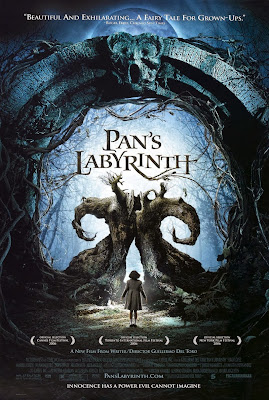Here are the viewings of the past three weeks of uni!
From the module British National Cinema
My Beautiful Laundrette (Stephen Frears, 1985)
Set in Thatcherite Britain the first film to openly talk about homosexuality and the second generation immigrants generational conflict within their families and the British society itself. A very interesting case of film made for television which became huge on the big screen on its release.
Notting Hill (Roger Michell, 1999)
Well, what more can be said about this film? I watched it for ten times, I think, but I still laugh and enjoy it every single time! Don't care if it's all romance and clichès, we just need them sometimes. Think about the relationship between American and English characters, the representation of London and Britishness, the reflection on film stardom and the different personas Julia Roberts embodies, not only as Anna, but also as herself as star.
In The Loop (Armando Iannucci, 2009)
Do you want a swearing lecture?? Please enjoy the best political satire film I've ever seen. Parody of the New Labour Government in the period of declaration of war to Iraq. The film works because it takes the piss out of the highest ranks in both British and American politics and dismantles their authorities, revealing the too-recurrent incapacity of our politicians.
Here you can watch Malcolm Tucker at his best:
From the module Hollywood Cinema
Guess Who's Coming to Dinner (Stanley Kramer, 1967)
Starring the biggest black star of its time, Sydney Poitier, this film is a comedy of misunderstandings and racial stereotypes facing the human rights movements of the 60s. Katharine Hepburn and Spencer Tracy give amazing performances re-affirming themselves as two of the best actors of their generation. A film that makes us still think today, if we consider that racism in both life and films has not disappeared at all, and does not always lead to such a happy ending.
Rocky I (John G. Avildsen, 1976)
Rocky probably contains one of the best and less cheesy love stories in Hollywood cinema. We all want Rocky to win, we all want him to move upwards the social ladder, we all want him to live the American Dream, and live it with him.
From the module Contemporary Spanish Cinema
La leyenda del tiempo (Isaki Lacuesta, 2006)
One of the best films I've ever seen, I'm glad I have discovered such an interesting director as Isaki Lacuesta about whom I will write a separate post because I think his films can be very much appreciated and should be more well known. A touching film, travelling to the roots of flamenco in the bay of San Fernando, telling two stories which merge in the same quest: finding one's own voice and origins. The title comes from Federico Garcia Lorca's poem, which Camaron de la Isla, the international flamenco star celebrated and remembered in this film, chose as title for his breakthrough album. I leave you with my favourite lines:
"Y si el Sueno finge muros
en la llenura del Tiempo,
el Tiempo le hace creer
que nace en aquel momento."
La Comunidad (Alex de la Iglesia, 2000)
One name and one word: Carmen Maura and hylarious. Alex de la Iglesia was another great discovery of this semester and I can only tell you to watch the film and be amazed by the colours, the grotesque, the popular culture quotes such as Star Wars, the recuperation of the Spanish tradition of Esperpento and the use of Madrid and its inhabitants/types in our postmodern reality.
Blancanieves (Pablo Berger, 2012)
Ok I've got to tell you, I cried so many times during this film, it became my absolute favourite among this year's. I will write a separate post on it because there is so much to say. It's a fairy-tale of other times, again searching for the roots of Spanishness, and celebrating Spain's lost silent cinema era, hommaging Spanish cinema, culture, and cinema of all world at its best.
From the module Chinese Cinemas
Xiao Wu/ Pickpocket (Jia Zhangke, 1998)
This is not a film for everyone, especially for its linguistic difficulties since it openly deals with the multiplicity of dialects and languages among the different Chinese communities. But if you are interested in this topic, or you are Chinese students or speakers this might be a good film choice to reflect on language. Check out the director's work in general, which always deals with these issues.
Cape no. 7 (Wei Te-Sheng, 2008)
A light alternative to Hollywood musicals, funny, catchy, and a good example of Taiwanese blockbuster, nonetheless it was nicknamed "The Chinese Titanic". I leave the connections between the two to you!
Finding Mr. Right (Xiao Lu Xue, 2013)
Building on the Hollywoodian stereotype of love proposed by Sleepless in Seattle, this film promotes it to then dismantle it and actually offer a more realistic picture of humans rather than heroes, and of common relationship rather than the fairy-tale kind of love. I suggest it as a weekend viewing, but also as a point of reflection on issues of transnationalism and Hollywood influences.







.jpg)






































.jpg)


.jpg)

.jpg)